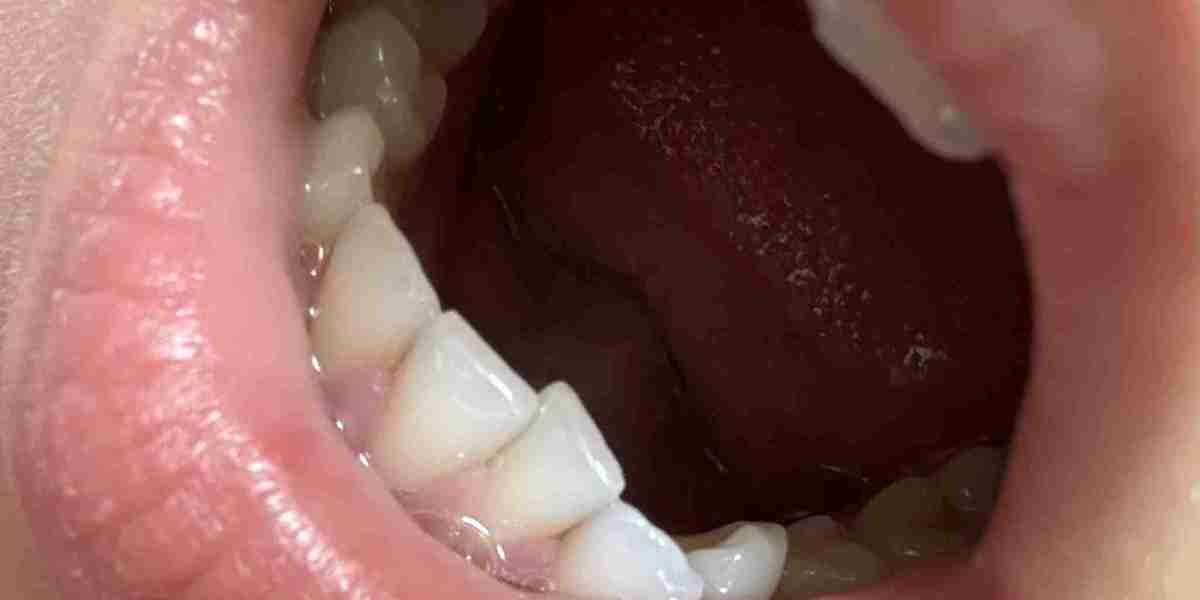Overlapping teeth can affect more than just the appearance of your smile. While many people think of overlapping teeth as a purely cosmetic concern, they can lead to a variety of other dental problems, including jaw pain. If you’ve noticed discomfort in your jaw, you might wonder if your Overlapping Teeth Treatment are the cause. In this article, we’ll explore how overlapping teeth can lead to jaw pain and what you can do to alleviate the discomfort.
Understanding the Connection Between Overlapping Teeth and Jaw Pain:
Overlapping teeth occur when one tooth partially or completely covers the adjacent tooth, leading to an improper bite. This misalignment can cause a range of issues, including jaw pain. The connection between overlapping teeth and jaw pain is linked to how the teeth and jaw interact during everyday activities like chewing and speaking. When the teeth don’t align properly, your jaw muscles and joints are forced to compensate, leading to
Increased muscle tension – Overlapping teeth can cause your jaw muscles to work harder than normal, leading to fatigue and pain.
Uneven bite force – When teeth overlap, they may not come together evenly, causing excessive pressure on certain areas of the jaw, which can result in discomfort.
TMJ disorders – A misaligned bite can strain the temporomandibular joint (TMJ), leading to inflammation and jaw pain, a condition known as temporomandibular joint disorder (TMD).
The Role of Your Bite in Jaw Pain:
The way your upper and lower teeth fit together is crucial to the health of your jaw. An improper bite caused by overlapping teeth can lead to
Malocclusion – When your teeth don’t align properly, it’s known as malocclusion. This misalignment can disrupt the natural function of your bite, causing strain on the jaw muscles and joints.
Jaw misalignment – If the teeth aren’t positioned correctly, it can cause the jaw to shift in a way that leads to pain and discomfort.
Teeth grinding – Overlapping teeth can cause you to grind your teeth at night, which places additional pressure on the jaw and can contribute to jaw pain.
A misaligned bite is often at the root of jaw pain caused by overlapping teeth. Correcting this issue is crucial for preventing long-term discomfort.
How Overlapping Teeth Contribute to Temporomandibular Joint (TMJ) Disorder?
Overlapping teeth can lead to TMJ disorder, a condition that affects the jaw joint and the muscles controlling jaw movement. TMJ disorder can cause severe jaw pain, along with a variety of other symptoms such as
Pain or tenderness in the jaw – Individuals with TMJ disorder often experience pain or tenderness in the jaw, especially after chewing or speaking.
Clicking or popping sounds – You may hear clicking or popping noises when you move your jaw, which is caused by the misalignment of the temporomandibular joint.
Headaches – Jaw pain caused by TMJ disorder can also lead to frequent headaches or migraines.
Difficulty opening or closing the mouth – A misaligned jaw can make it hard to open or close your mouth fully, leading to discomfort.
If left untreated, TMJ disorder caused by overlapping teeth can lead to chronic jaw pain and further dental complications.
Treatment Options for Jaw Pain Caused by Overlapping Teeth:
If you’re experiencing jaw pain due to overlapping teeth, there are several treatment options to consider. Depending on the severity of the misalignment and jaw discomfort, your dentist or orthodontist may recommend
Braces or clear aligners – Correcting the misalignment of the teeth with braces or clear aligners can help improve your bite, alleviate strain on the jaw, and reduce discomfort.
Mouthguards – If teeth grinding is contributing to your jaw pain, a custom-made mouthguard can protect your teeth from further damage and reduce pressure on your jaw.
Physical therapy – For TMJ disorder, physical therapy exercises can help improve jaw mobility and relieve muscle tension.
Pain relief – Over-the-counter pain medications or prescription muscle relaxers may be recommended to manage jaw pain in the short term.
Surgical options – In rare cases, surgery may be required to correct severe TMJ disorder or jaw misalignment caused by overlapping teeth.
Your dentist or orthodontist can work with you to determine the best course of treatment based on the root cause of your jaw pain.
Preventing Jaw Pain from Overlapping Teeth:
The best way to prevent jaw pain caused by Overlapping Teeth is to address the underlying issue before it leads to more severe discomfort. Preventative measures include
Regular dental checkups – Regular visits to your dentist can help detect misalignments early, allowing for timely intervention and preventing future jaw pain.
Orthodontic treatment – If overlapping teeth are present, orthodontic treatments such as braces or clear aligners can prevent long-term jaw discomfort by aligning the teeth and improving the bite.
Good oral hygiene – Practicing good oral hygiene helps prevent the buildup of plaque and bacteria, which can worsen dental problems and lead to misalignment.
Mindful jaw positioning – Avoid habits like clenching your jaw or grinding your teeth, as these can exacerbate jaw pain. If you notice any discomfort, speak to your dentist about ways to prevent these habits.
By addressing overlapping teeth early on, you can prevent jaw pain and maintain optimal oral health.
Conclusion:
Overlapping teeth can lead to a variety of dental problems, including jaw pain. The misalignment caused by overlapping teeth can strain your jaw muscles and joints, potentially leading to TMJ disorders, muscle fatigue, and discomfort. Fortunately, treatments such as braces, clear aligners, and physical therapy can help alleviate the pain and correct the underlying issue. If you’re experiencing jaw pain due to overlapping teeth, it’s important to consult with a dentist or orthodontist to determine the best course of action and prevent long-term issues.




